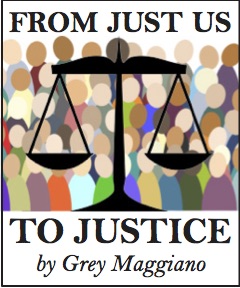By Grey Maggiano
On May 2nd, 1903, more than 700 people gathered on a platform erected on Mt. Royal Avenue to celebrate the commemoration of the Confederate Soldiers and Sailors Monument—the first of four Confederate monuments erected in Baltimore. Hundreds more people gathered around the platform and on the parade route, which left from Mt Vernon Square and marched to Bolton Hill. The marchers, dressed in full Confederate military dress, made sure to stop at 814 Cathedral Street, the home of General Lawrason Riggs, where a member of his family waved a Confederate battle flag from one of the upper windows to rousing cheers from the procession.
Among those celebrating this event were many Bolton Hill residents. One was the Rev. William Meade Dame, rector of Memorial Episcopal Church. Another was Mrs. D. Giraud Wright, the President of the Daughters of the Confederacy, who lived on Park Ave. Newspaper accounts of the event gave the impression that much of the city turned out for the celebration.
During the opening prayer, the Rev. Dame reminded the crowd of the righteousness of the cause of the Confederacy and how the men being honored today “shed such luster on their name and race.”
Those who witnessed the spectacle might be forgiven for thinking the South had won the war and that slavery was still the law of the land.
This typical celebration of the “Lost Cause” movement defined the Confederacy as a heroic struggle for states’ rights against an overbearing government. It also occurred during a time of increasing racial tensions in the city of Baltimore. In 1903, Democrats in Maryland began their campaign to disenfranchise black voters through a series of proposed constitutional amendments. These failed, but in 1910, Baltimore passed the most restrictive housing ordinance in the country. Many of the local activists supporting these efforts were Bolton Hill residents. We should not forget these facts.
[Not a valid template]General Howard, the keynote speaker at the commemoration of the Confederate Soldiers and Sailors monument, said it was being erected “in the last days of the actors of the war”—that is, as the last of the Confederate soldiers were passing away—in the hopes that “in ages to come men and women who pass will say, ‘it is a worthy tribute from noble women to brave men.'” In all my research on this era of our city’s and our neighborhood’s history, I have been struck by the fact that there is almost no mention of slavery, the black residents of Baltimore, or the issue of race in general when it comes to the Civil War. It seems that in the interest of “reconciliation” between the North and South, reconciliation for slavery and the evils done to black bodies and minds was set aside and never taken up again.
Now that the city of Baltimore has taken down the all four monuments, the question that ought to be asked is: What next? Is the plinth left on Mt. Royal Ave. left empty? Does it become a platform for MICA students and other artists to express themselves? Should another statue be erected in its place? What conversations—if any—should be had with the Daughters of the Confederacy and the descendants of those who erected the statue in the first place?
While many feel great relief that these statues have finally come down, many others, I suspect, may be surprised or even taken aback by the City’s actions. Very few, I suspect, are aware of the origins of these statues, their ties to the Lost Cause movement and the strong white supremacist overtones that surrounded their installations. I suspect many may still wonder why it was necessary to remove these statues at all.
Perhaps we, as a community, need to dedicate ourselves to our own neighborhood truth and reconciliation process. We need to tell—and hear—the truth about Bolton Hill’s own history of racism and support for segregation, and then have some honest conversation, not only about removing statues, but about the current realities of race and racism in our neighborhood, schools and universities here in Bolton Hill. How to people of color continue to be affected by these realities?
To this end, we’ll be hosting further discussion about Memorial Episcopal Church and the role it has played in Bolton Hill’s racial history on Wednesday, September 27, at 7 pm. We hope you’ll attend and help continue our neighborhood’s truth and reconciliation process.

